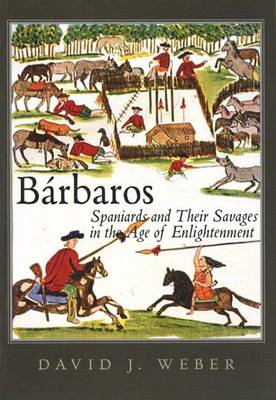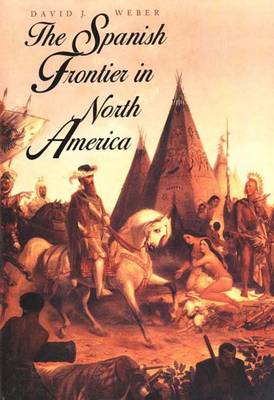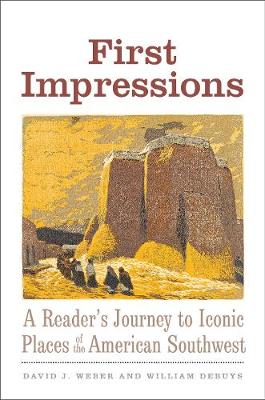Lamar Series in Western History (YALE)
3 total works
Two centuries after Cortes and Pizarro seized the Aztec and Inca empires, Spain's conquest of America remained unfinished. Indians retained control over most of the lands in Spain's American empire. Mounted on horseback, savvy about European ways and often possessing firearms, independent Indians continued to find new ways to resist subjugation by Spanish soldiers and conversion by Spanish missionaries. In this panoramic study, David Weber explains how late eighteenth-century Spanish administrators tried to fashion a more enlightened policy toward the people they called barbaros, or 'savages'. Even Spain's most powerful monarchs failed, however, to enforce a consistent, well-reasoned policy toward Indians. At one extreme, powerful independent Indians forced Spaniards to seek peace, acknowledge autonomous tribal governments and recognise the existence of tribal lands, fulfilling the Crown's oft-stated wish to use 'gentle' means in dealing with Indians. At the other extreme the Crown abandoned its principles, authorising bloody wars on Indians when Spanish officers believed they could defeat them.
Power, says Weber, more than the power of ideas, determined how Spaniards treated 'savages' in the Age of Enlightenment.
Power, says Weber, more than the power of ideas, determined how Spaniards treated 'savages' in the Age of Enlightenment.
In 1513, when Ponce de Leon stepped ashore on a beach of what is now Florida, Spain gained its first foothold in North America. For the next 300 years, Spaniards ranged through the continent building forts, missions and farms, ranches and towns to reconstruct the Iberian world. This illustrated book presents an overview of the Spanish colonial period in North America. It provides an account not only of the Spaniards' impact on the lives, institutions and environments of the native peoples but also of the effect of native North Americans on the societies and cultures of Spanish settlers. With quotations and illustrations, David Weber describes the establishement, expansion and retraction of the Spanish frontier and recounts the forging of a Hispanic empire that ranged from Florida to California. Weber refutes the common assumption that while the English and French came to the New World to settle or engage in honest trade, the Spanish simply came to plunder. The Spanish missionaries, soldiers and traders who lived in America were influenced by diverse motives and Weber shows that their behaviour must be viewed in the context of their own time and within their own frame of reference.
Throughout, Weber deals with many other issues, including the difference between English, French and Spanish treatment of Indians, the social and economic integration of Indian women into Hispanic society and the reasons why the Spanish communities in North America failed to develop at the rate that the English settlements did.
Throughout, Weber deals with many other issues, including the difference between English, French and Spanish treatment of Indians, the social and economic integration of Indian women into Hispanic society and the reasons why the Spanish communities in North America failed to develop at the rate that the English settlements did.
A guide to the history and culture of the American Southwest, as told through early encounters with fifteen iconic sites
This unique guide for literate travelers in the American Southwest tells the story of fifteen iconic sites across Arizona, New Mexico, southern Utah, and southern Colorado through the eyes of the explorers, missionaries, and travelers who were the first non-natives to describe them. Noted borderlands historians David J. Weber and William deBuys lead readers through centuries of political, cultural, and ecological change.
The sites visited in this volume range from popular destinations within the National Park System-including Carlsbad Caverns, the Grand Canyon, and Mesa Verde-to the Spanish colonial towns of Santa Fe and Taos and the living Indian communities of Acoma, Zuni, and Taos. Lovers of the Southwest, residents and visitors alike, will delight in the authors' skillful evocation of the region's sweeping landscapes, its rich Hispanic and Indian heritage, and the sense of discovery that so enchanted its early explorers.
Published in Cooperation with the William P. Clements Center for Southwest Studies, Southern Methodist University
This unique guide for literate travelers in the American Southwest tells the story of fifteen iconic sites across Arizona, New Mexico, southern Utah, and southern Colorado through the eyes of the explorers, missionaries, and travelers who were the first non-natives to describe them. Noted borderlands historians David J. Weber and William deBuys lead readers through centuries of political, cultural, and ecological change.
The sites visited in this volume range from popular destinations within the National Park System-including Carlsbad Caverns, the Grand Canyon, and Mesa Verde-to the Spanish colonial towns of Santa Fe and Taos and the living Indian communities of Acoma, Zuni, and Taos. Lovers of the Southwest, residents and visitors alike, will delight in the authors' skillful evocation of the region's sweeping landscapes, its rich Hispanic and Indian heritage, and the sense of discovery that so enchanted its early explorers.
Published in Cooperation with the William P. Clements Center for Southwest Studies, Southern Methodist University


